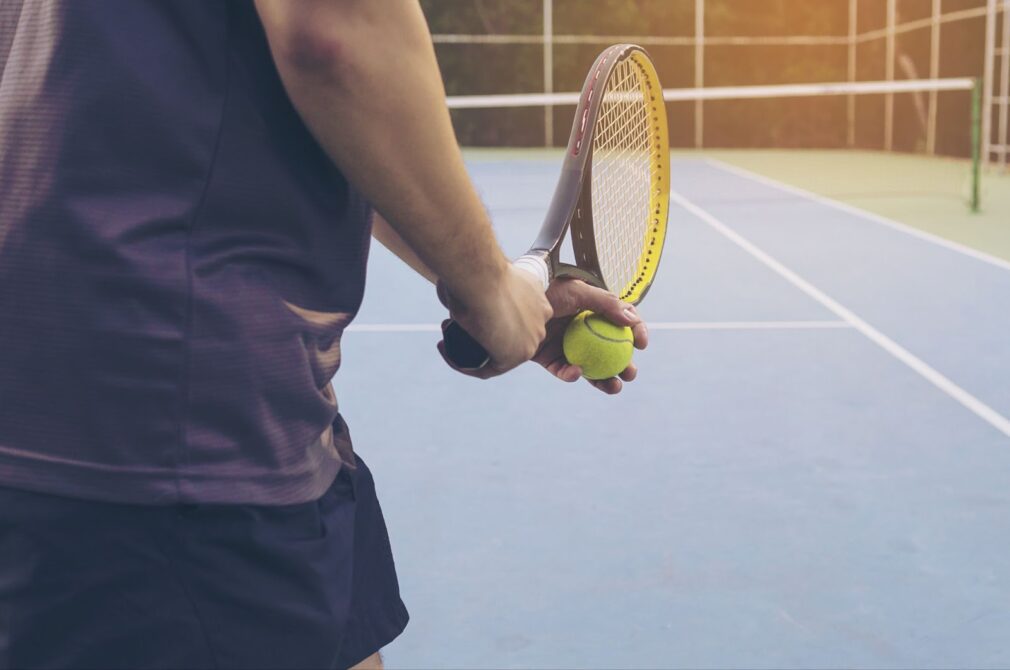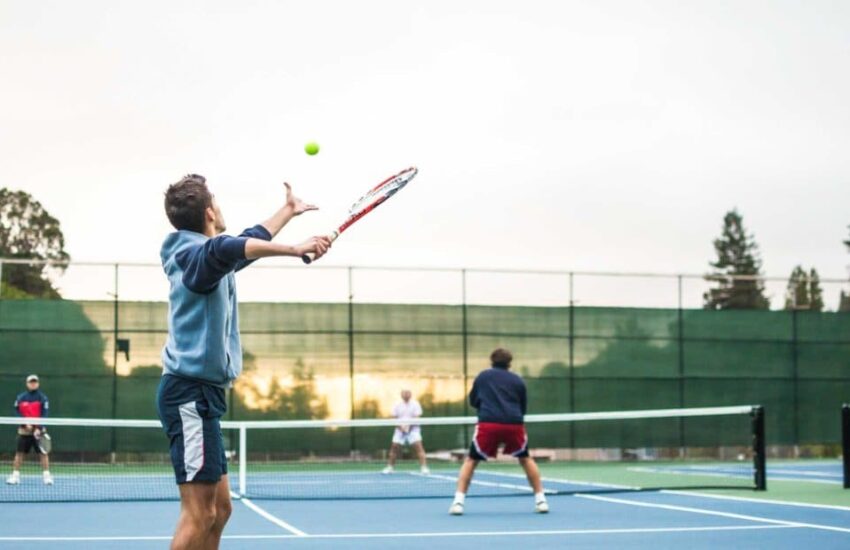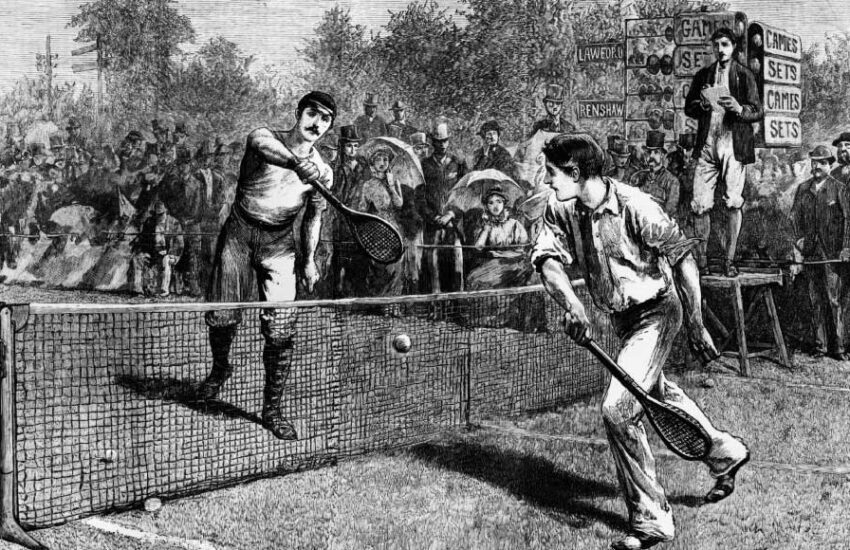Why Tennis Players Make Those Peculiar Grunting Sounds
Occasionally, within the realm of tennis, a cacophonous resonance emerges, emanating from specific players during the execution of their shots. This audible phenomenon is often denoted as “shrieking” or “screaming.” Notably, both male and female tennis competitions prominently feature this vocalization.
Within the realm of men’s and women’s tennis, the figures of Monica Seles and Jimmy Connors are held in high esteem as the progenitors of these distinctive grunts. Among the contemporary tennis elite, prominent exponents of this practice include Serena Williams, Venus Williams, Maria Sharapova, Victoria Azarenka, Aryna Sabalenka, Rafael Nadal, Andy Murray, Novak Djokovic, David Ferrer, and Gustavo Kuerten.
The Fascinating Evolution of Grunting in Tennis
In the world of tennis, the age-old debate over grunting has resurfaced time and again, capturing the attention of fans and players alike. Let’s dive into the intriguing history of grunting in tennis and explore the advantages and controversies surrounding this vocal phenomenon.
The Accusation at the 2018 Australian Open
The 2018 Australian Open provided a stage for one of tennis’ most controversial moments when Belarusian sensation Aryna Sabalenka faced off against Australian star Ash Barty. The focal point of this match was Sabalenka’s notorious grunting, which prompted accusations and ignited a debate that still lingers in the tennis community. But what exactly is grunting, and why does it matter?
Grunting: A Form of Cheating?
Martina Navratilova, a former world number one and tennis legend, raised a provocative question: Is grunting a form of cheating? She pointed out that while players like Roger Federer execute powerful shots without uttering a sound, others rely on grunts that might be more than just a vocal quirk. The concern extends beyond mere annoyance; it centers on whether grunting obscures vital audio cues in the game.
The Power and Timing Connection
Navratilova’s argument delves deeper into the subtleties of tennis. When a player strikes the ball, the sound it makes as it leaves the racquet provides valuable information to their opponent. Grunting, she posits, can potentially mask this auditory cue, hindering an experienced player from gauging the incoming shot’s power and spin. In this context, grunting takes on a strategic dimension, as players may use it to their advantage or to the disadvantage of their opponents.
Historical Complaints: Ivan Lendl and Aravane Reza
The history of grunting-related complaints in tennis is not limited to the modern era. In 1988, Ivan Lendl voiced his frustrations about Andre Agassi’s grunting during the US Open. Lendl claimed that Agassi’s grunts grew considerably louder when he unleashed a powerful shot, throwing off his timing and concentration.
Another memorable incident occurred during the 2009 French Open when Aravane Reza raised objections to Michelle Larcher de Brito’s “shrieking” on the court. This led to the intervention of a Grand Slam supervisor, highlighting the severity of the issue. The spectators even booed Larcher de Brito when no action was taken against her.
Chris Evert’s Perspective on the Grunting Phenomenon
Adding to the complexity of the debate, Chris Evert, a former tennis star, refrained from labeling grunting as outright cheating. However, she noted a concerning trend – the increasing volume and shrillness of grunts among contemporary players, especially the men. This observation prompts us to explore whether there’s a gender dimension to the grunting discussion.
Key Takeaways and Reflection
As we journey through the history of grunting in tennis, it becomes evident that this vocal expression carries more weight than meets the ear. It has sparked debates about sportsmanship, tactics, and gender dynamics. Here are some key takeaways to ponder:
- Grunting may offer a strategic advantage by masking the sound of the ball leaving the racquet;
- The debate over grunting is not new, with historical complaints dating back decades;
- The volume and frequency of grunting may be on the rise in the modern game;
- As tennis enthusiasts, we must consider the impact of grunting on the sport and its players, and whether it’s time for a clearer stance on this age-old controversy.
Understanding the Debate Around Grunting in Tennis
The Stance of Players on Grunting
- Michelle Larcher de Brito’s Perspective: Known for her high-decibel grunts, Larcher de Brito holds a firm stance on her right to grunt during matches. She believes it’s an integral part of her game and is prepared to face penalties rather than compromise her play style. Her grunting, measured at an impressive 109 decibels, is a testament to her commitment to this aspect of her game;
- Maria Sharapova’s Viewpoint: As a celebrated Wimbledon champion, Sharapova has been grunting since her early days in tennis. She sees it as a non-negotiable part of her playing technique, deeply ingrained in her style;
- Serena Williams’ Opinion: Williams, a renowned name in tennis, perceives grunting as a natural part of the game that doesn’t influence her performance. She maintains focus on her play, regardless of her own grunting or that of her opponent.
Grunting: Strategy or Natural Response?
- The Nick Bollettieri Connection: Several high-profile players known for their loud grunting, including Larcher de Brito, Monica Seles, Sharapova, Andre Agassi, and the Williams sisters, have been trained by Nick Bollettieri. This connection has sparked discussions about whether Bollettieri encourages grunting as a strategic edge;
- Bollettieri’s Response: Contrary to the speculation, Bollettieri denies promoting grunting as a distraction tactic. He views it as a natural part of exertion in the sport, preferring to describe it as “exhaling” rather than grunting.
Insights and Recommendations:
- Understanding Grunting: Grunting is often a natural response to the physical exertion of tennis. It can be seen as a way for players to release energy and maintain rhythm during intense play;
- Respecting Player Techniques: While grunting can be distracting for some, it’s important to respect it as a part of a player’s individual style and strategy;
- For Spectators: If grunting in tennis affects the viewing experience, consider watching matches with lower volume or focusing on the technical aspects of the game to appreciate the players’ skills beyond their vocal expressions;
- For Aspiring Tennis Players: If you find yourself grunting during play, focus on whether it helps your game. Be mindful of how it affects your opponents and be prepared to adapt if required in different playing environments.
Analyzing the Controversy and Psychology Behind Grunting in Tennis
Addressing the Accusations of Grunting as a Tactic
- Caroline Wozniacki’s Claim: Former world number one, Caroline Wozniacki, brought to light allegations against Bollettieri’s academy students, suggesting their grunting was a deliberate strategy to gain unfair advantage;
- Response from WTA Leadership: Stacy Allaster, the WTA Chairman, acknowledged the issue, expressing the organization’s intent to engage with Bollettieri’s academy. The goal was to understand and potentially mitigate the trend of loud grunting among upcoming players.
Bollettieri Academy’s Acknowledgment and Response
- A Shift in Perspective: Bollettieri’s academy, recognizing the implications, released a statement labeling grunting as “unsportsmanlike”. They acknowledged tennis legend Navratilova’s observation that grunting can mask the sound of ball-on-string contact, potentially leading to errors and delayed reactions in opponents;
- Implications for Future Training: This admission marked a pivotal moment, suggesting a potential change in coaching techniques to address and possibly reduce grunting in future generations of tennis players.
Psychological and Physiological Insights into Grunting
- Louise Deeley’s Analysis: As a sports psychologist from Roehampton University, Deeley highlights the rhythmic importance of grunting for some players. It’s not just a noise; it serves as a pacing and timing mechanism during play, despite potential perceptions of it being a distraction;
- Bruce Lynne’s Physiological Perspective: From University College London, physiologist Lynne provides an intriguing insight into the body’s mechanics. He explains the phenomenon of ‘re-enforcement’, where clenching the jaw can actually sharpen leg reflexes. This underscores the interconnectedness of physical actions and reactions in sports.
Additional Perspectives and Recommendations:
- For Players and Coaches: It’s important to be aware of the psychological and physiological aspects of grunting. While it can be a natural part of a player’s rhythm, consider its impact on opponents and the perception in the sports community;
- For Tennis Enthusiasts and Critics: Understanding the multi-faceted nature of grunting in tennis is crucial. It’s not just a tactic but can be a deeply ingrained part of a player’s physical and psychological makeup;
- For Young Aspiring Tennis Players: As the coaching methods evolve, it’s valuable to be conscious of how grunting is perceived and taught. Balance is key – incorporating it as part of your natural rhythm without relying on it as a primary strategy.
Exploring the Science of Grunting in Tennis
In the dynamic world of tennis, an intriguing phenomenon has captured the attention of researchers – grunting. This vocal expression, a unique fusion of power and strategy, has unveiled two fascinating dimensions that have fueled scientific curiosity.

1. The Impact on Opponents
Imagine standing across the net from a player who unleashes a powerful grunt with every stroke. This is where the first element of grunting comes into play – its effect on the opponent. Researchers have delved into how grunting can potentially disrupt an opposing player’s performance.
Key Findings:
- Grunting interferes with information absorption: When facing a grunting opponent, the absorbing of crucial cues during shot preparation becomes challenging. The auditory landscape is disrupted, making it harder for players to decipher their opponent’s intentions;
- Performance-detrimental for opponents: Grunting is, in essence, a performance-detrimental tactic for the player on the receiving end. It places them in a disadvantaged position, as their ability to anticipate and react effectively is compromised.
2. Performance Enhancement for the Grunter
Now, let’s turn our attention to the second element of grunting – its impact on the grunter’s own performance. Surprisingly, grunting may not only be a quirk but a performance-enhancing tool.
Research Insights:
- Concealing auditory information: Early experimental studies have demonstrated that grunting can conceal crucial auditory information. In one study, participants watched video clips of a tennis player hitting the ball, either with or without a grunt. Their task was to determine the ball’s direction – left or right. The presence of a grunt led to slower and less accurate directional decision-making;
- The 30-millisecond delay: Translating these findings to the tennis court, a mere 30-millisecond delay in reaction time due to an extra auditory stimulus, such as a grunt, can lead to an opponent picking up a rally shot two feet later. This added pressure on the opponent reduces their preparation time, ultimately hampering their performance.
The Grunt’s Influence on Performance:
While the advantages for the grunter are clear, the mechanisms behind this remain multifaceted and somewhat mysterious:
- Concealing aural information: Professional players have anecdotally suggested that a well-timed grunt may hide crucial auditory cues generated at the moment of racquet-ball contact;
- Diverting attention: Another theory posits that grunting might divert a player’s attention away from the sound of racquet-ball contact, potentially affecting their timing and focus;
- Visual information: Lastly, there’s the possibility that a grunt could draw attention away from visual cues available at the point of racquet-ball contact. However, it’s important to note that concrete proof for these theories is currently lacking.
The Impact of Grunting on Tennis Performance
Enhancing Stroke Power Through Grunting
Increased Hitting Velocity: Research reveals that grunting significantly boosts the power of a tennis player’s strokes. Specifically, experienced university-level tennis players exhibited a remarkable 3.8% increase in the speed of their groundstrokes when they incorporated grunts into their play. Also, dive into the world of precision and finesse with our guide to mastering the slice in tennis. Elevate your game today!
Bullet List of Benefits:
- Higher Serve Speed: Serving while grunting led to a 4.9% increase in ball velocity. This translates into a notable speed difference, with grunted serves being around 4.35 mph (7 kph) faster than silent serves;
- Augmented Force Generation: Grunting not only elevates the speed of the ball but also enhances the force behind each shot. This is indicated by the increased muscle activity observed during grunting;
- No Extra Physical Strain: Intriguingly, the benefits of grunting come without additional perceived effort or energy expenditure from the player. This means athletes can hit harder and faster without feeling more fatigued.
Practical Applications and Recommendations
Incorporating Grunting into Practice: Tennis players at all levels can consider incorporating grunting into their practice routines. It’s a simple, yet effective technique to enhance performance.
- Gradual Introduction: Start by introducing grunting during practice sessions to get comfortable with the technique;
- Consistency is Key: Maintain a consistent grunting pattern to ensure it becomes a natural part of your playing style;
- Monitor Your Effort Levels: Be mindful of your effort and energy levels. Even though grunting doesn’t increase perceived effort, staying aware of your physical condition is crucial.
Conclusion
In conclusion, the resounding grunts that punctuate the world of tennis, often described as “shrieking” or “screaming,” have become an integral part of both men’s and women’s games. From the iconic contributions of Monica Seles and Jimmy Connors to the modern era exemplified by players like Serena Williams, Rafael Nadal, and Novak Djokovic, this unique vocalization adds an intriguing layer to the sport’s rich history and competitive landscape. Whether it’s met with enthusiasm or criticism, the phenomenon of grunting continues to be a distinctive and enduring aspect of tennis.



